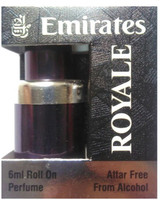Why Hand Cream Matters: Everyday Benefits for Healthy, Soft and Nourished Hands
Hands are storytellers. They knead dough, write exam answers and scroll endlessly on phones. Yet, they are often left behind with just soap and sanitiser. Hand cream matters more than you think - it has everyday benefits to ensure healthy, soft and nourished hands.
Hand Cream Rituals: Why Your Hands Deserve More Than Soap and Sanitiser.
Think of the last time you complimented someone's hands. Rare, isn't it? We fuss over glowing skin, lustrous hair, and even manicures, but hands quietly soldier on, washing, chopping, typing, scrubbing, and sanitising, without much pampering. Soap strips their natural oils, sanitiser stings, and then they are expected to look presentable during weddings, job interviews, or at the counter when exchanging cash.
In a country where weather swings from scorching summers to bone-dry winters, and where spices, detergents, and dust find a way into every routine, hands are left exposed. They crack, darken, and age before the face does. And the solution? A humble tube of hand cream. Far from being a luxury, it's a ritual, a quiet moment of self-care that keeps hands looking cared for and feeling nourished.
Hand cream matters more than you think - it has everyday benefits to ensure healthy, soft and nourished hands.

When it comes to your hands, explore why investing in hand creams is equivalent to a very rewarding experience on a daily basis; Photo Credit: Pexels
Why Hand Cream Rituals Matter: Ten Everyday Reasons
1. Hands Carry Daily Stories
Hands hold the morning cup of chai, flag down rickshaws, and tap impatiently on steering wheels stuck in traffic. They fold laundry in humid weather and knead dough until it feels just right. They are dipped in haldi during weddings and decorated with mehendi at festivals. These stories leave invisible imprints, but they also leave calluses, cuts, and roughness.
While faces often receive the attention of expensive skincare routines, hands narrate the more real side of living, where hard work meets ritual. A hand cream isn't just about moisturising; it's about acknowledging these unsung stories and ensuring that they don't end with dry, cracked skin.
2. Soap and Sanitiser: Necessary Villains
During the pandemic, sanitiser bottles sat at every shop counter, wedding hall entrance, and even tucked into handbags. Useful? Absolutely. Gentle? Not really. Most sanitisers contain high levels of alcohol, which evaporates natural oils in seconds, leaving palms parched. Soap fares slightly better, but many household bars are strong enough to strip away grease from a pan and from skin.
The irony is that what protects us also harms us. Dryness sneaks in, tiny lines deepen, and suddenly, the hands of someone in their twenties look like they belong to an older generation. This is where hand cream plays superhero, swooping in after the necessary villains to restore balance.
3. The Weather Factor
Step outside in Delhi during May and the heat feels like an open oven; head to Shimla in December and the chill bites through. Coastal humidity, desert dryness, monsoon dampness, hands bear the brunt of every climate shift. Cracked knuckles in winter are as common as mosquito bites in summer.
Unlike the face, which we shield with scarves, hats, and sunscreens, hands remain exposed. A dollop of cream customised for the season, lightweight for sticky summers, buttery-rich for harsh winters, works like seasonal armour. Think of it as adjusting your wardrobe, but for your skin.
4. Handshakes, Gestures, and Impressions
First impressions aren't just about eye contact or smiles. A handshake that feels like sandpaper lingers in memory far longer than the words exchanged. At weddings, relatives often hold hands tightly while blessing couples; during festivals, hands reach out to share prasad or exchange gifts. Hands are not just functional, they are social.
Soft, cared-for hands reflect attention to detail, a sense of personal pride, and even respect for others. Carrying a hand cream in the handbag or keeping one at the office desk is less vanity, more courtesy. Nobody remembers the sanitiser sting, but they will remember a pleasant touch.
Also Read: Eye Cream Myths Debunked: What They Really Do for Your Skin
5. The Economics of Neglect
Dermatology appointments aren't cheap. A consultation can cost anywhere from ₹800–₹1500, and treatments for cracked skin or eczema climb higher. Compare that with a decent hand cream, which ranges between ₹200–₹600, lasting weeks. Prevention always costs less than cure.
Think of it the way households budget for ceiling fans to beat the heat rather than splurge later on AC repair when things collapse. Small, steady investments in hand care save heavier bills and discomfort later. Plus, who wouldn't prefer a fragrant cream over medicinal ointments?
6. Cultural Rituals of Hands
Hands are deeply woven into cultural practices. From joining palms in a namaste to lighting a diya, hands embody respect and spirituality. During weddings, haldi is applied generously, staining fingers a golden yellow, while festivals see hands dyed in gulal or smeared with sweets.
These rituals celebrate the role of hands but also leave them battered, colours that don't wash off easily, stickiness from laddoos, or stubborn mehendi residues. Hand creams become the bridge between tradition and modern care, allowing rituals to thrive without skin damage. They are not a replacement for culture but a companion to it.
7. Beyond Beauty: Health Benefits
Cracked skin isn't just unsightly, it's painful. Open cuts on knuckles sting when slicing chillies or scrubbing vessels. Dryness can escalate into infections, especially in humid kitchens where bacteria multiply.
Hand cream does more than soften; it forms a barrier, sealing moisture and preventing germs from entering those tiny fissures. Ingredients like aloe vera, shea butter, or coconut oil, often familiar from household remedies, double up as healers. So, while the beauty angle is obvious, the health angle is often ignored. Caring for hands means fewer bandages and fewer wincing moments mid-task.
8. A Moment of Pause
Life is often measured in deadlines, notifications, and endless scrolling. Amid all this rush, applying hand cream offers a small ritual of stillness. Just a minute to massage cream into palms, rub it across knuckles, and inhale a calming fragrance can work like a mini meditation.
Some people light incense sticks, others sip chai on balconies. Adding a hand cream ritual to this list might seem frivolous until experienced. It's the pause button we didn't know we needed, and often the only moment we give our overworked hands.
9. Choosing the Right Hand Cream
Walk into any chemist or mall store, and the choices can overwhelm: lavender-scented, unscented, vitamin-enriched, buttery, gel-like. The trick is to pick according to lifestyle. Someone chopping onions daily might prefer a non-greasy formula, while someone spending winters in Shimla needs a heavier one.
Budget matters too. A tube of ₹250 cream can perform as effectively as a ₹1500 luxury jar if the formula matches your needs. Checking ingredient lists, avoiding too many artificial fragrances, and sticking to tried-and-tested household oils like almond or coconut often works best. It's not about buying the fanciest product, but about buying the right one.
10. Passing Down Rituals
Grandmothers always had simple tricks: rubbing leftover malai on hands after boiling milk, or applying mustard oil after finishing rotis on a tawa. These rituals often faded with modern lotions and fast-paced routines. Bringing back such gestures, whether with modern creams or traditional alternatives, keeps the wisdom alive.
Passing on the importance of hand care to children ensures they grow up valuing small rituals. Just as hair oiling or turmeric pastes are still celebrated, hand cream rituals can become another thread in family care traditions. After all, culture survives in habits, not just in festivals.

When it comes to your hands, explore why investing in hand creams is equivalent to a very rewarding experience on a daily basis.; Photo Credit: Pexels
Products Related To This Article
1. THE BODY SHOP Unisex Sustainable Hand Cream
2. Earth Rhythm Floral Garden Hand Cream
3. Plum BodyLovin' Hand Cream For Ultra Moisturizing With Shea Butter
4. FIXDERMA Brightening Hand Cream With Kojic Acid
5. The Face Shop Daily Moment Vegan Hand Cream
6. Kimirica Blooming Garden Scented Hand Lotion with Cherry Blossom & Olive Oil
7. Orimii Nail & Hand Cream With Shea Butter & Alpine Berry
Hands deserve more than hurried washes and alcohol rubs. They are extensions of personality, reflections of health, and silent participants in every memory, from scribbling notes in schoolbooks to exchanging sweets during Diwali. A simple hand cream ritual is not indulgence, it is acknowledgement.
In a world obsessed with glowing faces and picture-perfect selfies, it's worth remembering that hands too deserve their spotlight. They tell stories, create impressions, and carry the weight of daily living. Protecting them with a touch of cream is perhaps the gentlest way of saying thank you. Shop now on Myntra.













